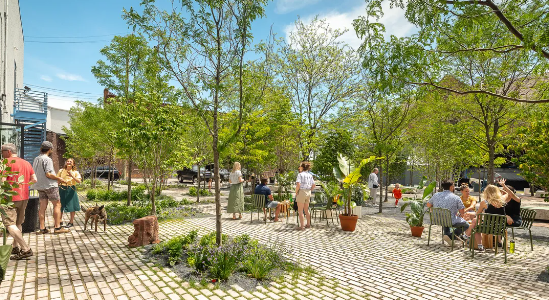Julie Bargmann: A Pioneer in Landscape Architecture
Julie Bargmann is not just a landscape architect; she is a visionary reshaping our relationship with the environment. With a focus on sustainability and the reclamation of urban spaces, Bargmann’s work reflects a deep commitment to integrating nature into the built environment. This topic is relevant and inspiring for anyone interested in architecture, ecology, or the future of urban living.
Revitalizing Urban Spaces
One of Bargmann’s most notable contributions is her ability to transform abandoned industrial sites into vibrant public spaces. Her work emphasizes the importance of repurposing existing landscapes rather than starting from scratch. For instance, her project at the Brownfield site in Pittsburgh showcases how creativity can breathe new life into forgotten spaces. By incorporating native plants and sustainable materials, she not only enhances the beauty of the area but also creates habitats for wildlife. This approach serves as a reminder of the potential that lies hidden in neglected urban settings.
Sustainability through Design
Bargmann’s designs consistently prioritize sustainability, marrying aesthetics with ecological responsibility. She advocates for the use of native flora, which requires less maintenance and water than conventional landscaped areas. This not only reduces environmental impact but also boosts local biodiversity. Her work illustrates that sustainability doesn’t have to compromise beauty; rather, it can enhance it. Through her innovative designs, Bargmann encourages individuals and communities to consider the ecological implications of their landscapes and to make choices that honor the planet.
Education and Advocacy
As an educator and advocate, Bargmann plays a crucial role in shaping the future of landscape architecture. Through her teaching at the University of Virginia, she imparts her passion and knowledge to the next generation of architects. She also contributes to public discourse on the importance of green spaces in urban planning. By engaging with students and the community, Bargmann cultivates a greater awareness of the social and environmental responsibilities that come with landscape design. Her efforts highlight that landscape architecture is not merely about creating beautiful views; it’s about making lasting impacts on communities and ecosystems.
Conclusion: The Future of Landscape Architecture
Julie Bargmann’s work is a testament to the transformative power of landscape architecture. Her innovative approaches to sustainability, urban revitalization, and education inspire us all to think critically about the spaces we inhabit. If you’re passionate about architecture or the environment, consider exploring her projects further. They offer invaluable lessons on how we can create a harmonious balance between human needs and the natural world.

